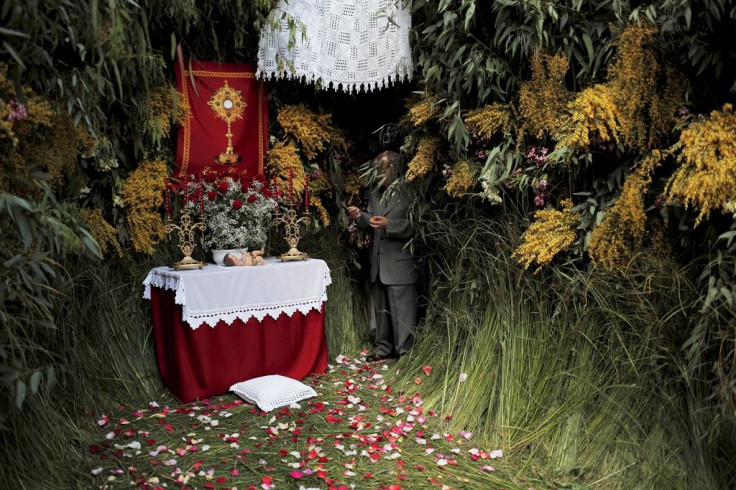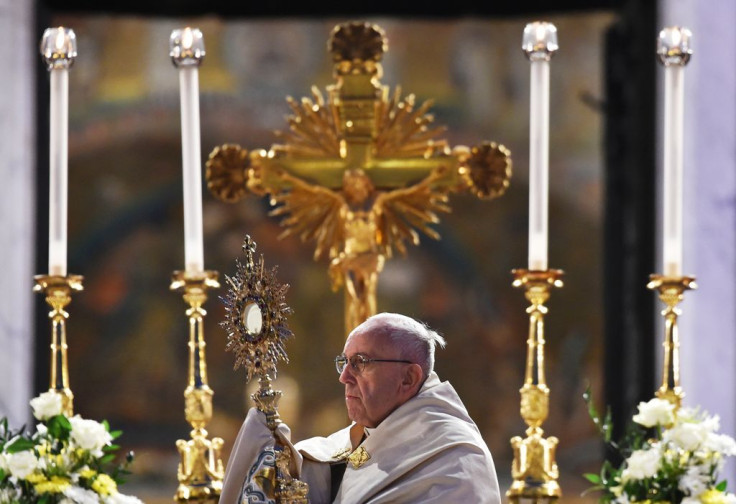Feast Of Corpus Christi Facts: Things To Know About Christian Observance Celebrating The Eucharist

The feast of Corpus Christi is a Christian observance celebrating the Eucharist — also known as Holy Communion. The feast, the date for which changes often, is celebrated mainly by Roman Catholics and it falls on the first Thursday in most countries or first Sunday in the U.S. after Trinity Sunday — 60 days after Easter.
The name "Corpus Christi" is of Latin origin meaning the body of Christ. The day commemorates the Last Supper before Jesus Christ was believed to have been crucified.
Read: A Brief History About Candlemas
Feast of Corpus Christi is a public holiday in countries such as Austria, Bolivia, Brazil, Croatia, Dominican Republic, Poland, Portugal, and Trinidad and Tobago. However, the day is not an official holiday in countries like Australia, Canada, the United Kingdom and the U.S.
The day is celebrated with processions led by high-ranking clergy. A mile-long carpet is made out of flower petals, on which the procession is carried on. In villages, streets and doorways are decorated with flowers and leaves. While, in recent years, the practice is no longer common, some communities still follow the tradition.

Following are facts about the feast of Corpus Christi, gathered from BBC, ThoughtCo, ShareFaith and Timeanddate.com:
- Corpus Christi is a movable feast and falls between late May and mid-June.
- Pope Clement V made Corpus Christi an obligatory feast for Roman Catholics in 1311 at the Council of Vienne.
- Symbols associated with the feast of Corpus Christi include an image of consecrated bread and chalice to depict the Eucharist; an altar; and a ciborium — a cup with an arched cover.
- Pope John Paul II, during his papacy, led a procession on the feast of Corpus Christi from St Peter's Square in the Vatican to the streets of Rome.
Read: What Does Easter Mean?
- The feast is also known as the Solemnity of the Most Holy Body and Blood of Christ.
- Prayers for the feast are Short Novena for Corpus Christi; Anima Christi
- The day is celebrated with pomp in Spain and Portugal, and Latin American nations. In Seville, Spain, the festival was reportedly known as ‘the Thursday that shines greater than the sun.’
- Several unique customs are associated with the feast of Corpus Christi, including pageants and processions that originated during the Middle Ages. During the 17th century Baroque Period, several processions across Europe had colorful characters and themes from both legend and the Bible. These included from stories of David and Goliath and Saint George and the dragon. However, by the end of the 18th century, these colorful displays declined in popularity and eventually led to their removal.
- Grand celebrations of the feast of Corpus Christi are less common in the U.K. than elsewhere. However, it is still observed with the wafer carried out of a church on a monstrance — vessel used by Roman Catholics — and being protected from the sun by a canopy.
- The celebration of the feast was suppressed during the Reformation in Protestant churches and due to this, most Protestant do not recognize or celebrate the day.
© Copyright IBTimes 2024. All rights reserved.






















